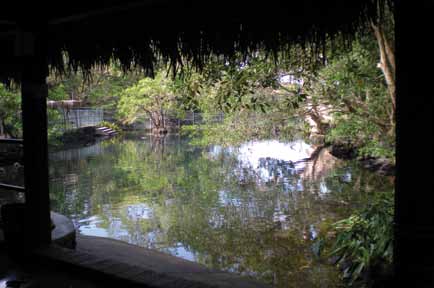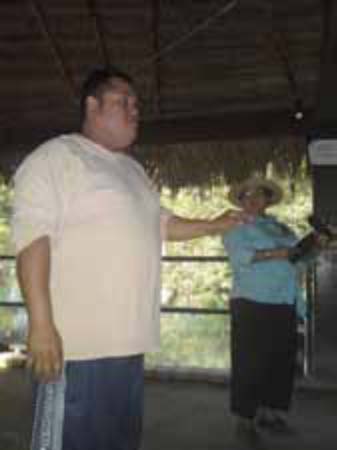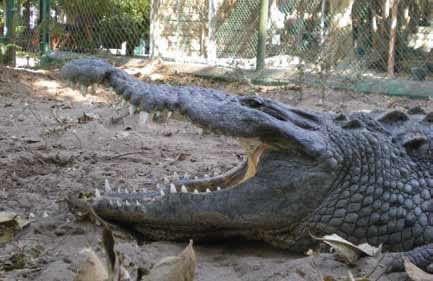Contents | 3 | 4 | 5 | 6 | 7 | 8 | 9 | 10 | 11 | 12 En español
Kiekari, “community” for
American Crocodiles
San Blas is a municipality with a rich cultural history and one where its inhabitants are concerned about the protection of the area's existing flora and fauna. One example of this concern is demonstrated by the ejido La Palma, itself rich in biodiversity and home to the crocodile reserve Kiekari.
According to Juan F. García, founder of the non-profit Mangrove Ecology Group, there needs to be a greater consciousness promoted about the relationship between humans and the environment within the local population as well as with visitors, so that this natural treasure will be preserved and can continue to generate income.
He points out that the ejido’s spring waters at Kiekari come from the mountains and that the highways now under construction obstruct the stream’s flow and can harm both the crocodiles that depend on the springs and the tourism economy generated because of the crocodile’s presence.
At the Kiekari crocodile reserve, there are twenty two Crocodylus acutus (American crocodile) hatchlings, aged about 8 months, as well as one Crocodylus moreletii (Morelet’s or Mexican crocodile).
On a visit to the park, Professor García talked about a project involving the extension of the interpretive trail at Kiekari in order to attract more visitors. He commented that San Blas will benefit from offering new tourist attractions, like this path with signs about the plants and animals found in the wetlands and mountains.
Educating tourists is a basic part of García’s proposal. García is a surfer from the port town who deserves having been named Green Hero in 2007 by the national magazine Expansión for his work protecting the environment.
The crocodiles’s caretakers play a huge role in sensitizing people to the reptiles. Jesús Alberto García Álamos, who is in charge of field techniques at the park, explains that the population of C. acutus still hasn’t recovered completely. In contrast, some people in the region say that there are a lot of crocodiles and that they are dangerous because they attack people.
He clarifies that these are alleged attacks caused by people’s carelessness and lack of caution. He explains that the animals are territorial, that people invade their territory and that they are only aggressive at certain times in their reproductive cycle.
He admits that there have been some unfortunate encounters between crocodiles and visitors to the park as well as in La Tobara, a popular tourist center located between the port and the park.
But, he insists, in regard to being dangerous or there being too many animals: “This is a lie, because the attacks that occurred happened in an area known to be inhabited by crocodiles. La Tobara isn’t a good place to go swimming. They even have a nightly patrol for the safety of guests. But the people don’t pay attention, they go swimming. Another alleged attack in the region was of a young drunk man who was creating a lot of noise and causing damage and in the end a crocodile bit him.”

Kiekari’s spring water comes from the mountains
Photo: PECE
*Center for Marine Technology Studies (CETMar) No. 26

"Alberto García Álamo says that his work is very difficult since he has to feed all of the animals on the reserve even when “there is no income.” Another problem stems from the complaints made by people who attribute crocodile attacks of humans to the repopulation being carried out by the Garcías. But he states: “they don’t understand that they [people] are in the crocodile's natural habitat, that there are signs warning of the animals and yet they still enter the water where crocodiles live.”
